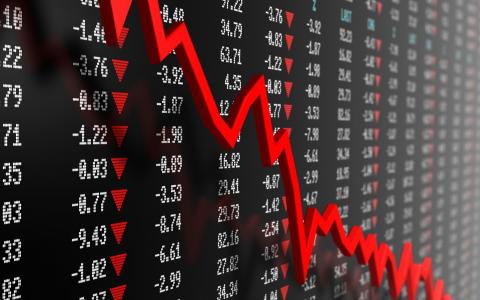
(Forbes) Fear still has a tight grip today, and unlike fear around something financial like a trade war or rate hikes, it’s hard to say when this anxiety will let up. Stock futures slipped after the Centers for Disease Control and Prevention (CDC) confirmed the first U.S. coronavirus case of unknown origin in Northern California, indicating possible “community spread” of the disease.
That’s probably not all that surprising, but does raise a red flag around the U.S. consumer. One consistent theme over the last year is U.S. consumer health. If people start getting scared and staying home due to the virus, that could have a chilling impact on the economy after it weathered the trade war last year. Online shopping could ease the pain, but it still represents just a small percentage of consumer activity overall.
Bond Yields, Crude Slammed as Volatility Heats Up
For a leading example of where fear is taking things, check the bond market. The benchmark 10-year Treasury yield fell to 1.28% this morning, another record low. The 30-year bond rate is also trading at an all-time low near 1.76%.
The Cboe Volatility Index (VIX) just ticked above 30 for the first time in 14 months. Crude has completely lost its footing and trades just above $47 a barrel, almost a 14-month low. All this is a big contrast to 24 hours ago when crude and yields showed signs of stability and VIX had eased off slightly.
The S&P 500 (SPX) is now shouting distance from the 200-day moving average, and a serious drop from there would probably do more technical damage to the market and possibly lead to an additional wave of selling. The 3050 area also happens to be about 10% below recent peaks.
The Dow Jones Industrial Average ($DJI) looks like it might take out a key support level near 26,700 as the session begins. That level marks about a 10% drop, or an official correction, from recent highs. It’s also a level that was tough resistance a couple of years ago when the $DJI struggled to claw above it.
Two very high-profile shares got rocked in overnight trading, with Apple (AAPL) down 3% and Microsoft (MSFT) down 4%. More and more companies, including MSFT, are warning about the coronavirus affecting their quarters.
Rough Ride Seen Continuing
There’s no sign of volatility putting its feet up any time soon, and that should come as no surprise. When the markets get rattled the way they did Monday and Tuesday with 3% losses each day (something that hadn’t happened since the financial crisis of late 2008), it’s like a bell getting rung, and the vibrations can last long after the last chime.
The volatility curve, which measures risk into the coming months, appears to reflect investor expectations that the virus is more likely to become a normal illness that humanity has to deal with and
maybe not a doomsday scenario that the market was pricing in Monday and Tuesday. Investors have been wrong in the past, of course, and because the virus is a medical issue and not a financial one, any long-term expectations about where it might go have to be taken a little less literally than, say, expectations for a possible rate cut.
Investors might have to get used to these levels as we approach March, especially with election season looming. Some analysts have even said some of the recent selling and volatility might reflect concerns about the Democratic primaries. There’s some who worry that a nominee might emerge who’s seen as unfriendly to the financial markets, with more regulation possible.
Fed Taking A Longer Look
Even if the Fed took emergency measures, it might not help that much. Instead, it’s possible investors would see that as a sign of desperation. So far, the Fed has sounded like it wants to wait and get more information before doing anything. Chances of a rate cut next month keep ticking higher, landing at around 36.5% by the end of the day yesterday, according to CME Group futures.
Almost every sector finished in the red again Wednesday as the bleeding continued. Energy got the worst of things as demand worries dominated and U.S. crude futures fell below $49 a barrel for the first time in nearly 14 months. The SPX hasn’t had a positive day since Feb. 18, more than a week ago, and now down more than 8% from its highs.
Looking for good news? Keep checking the data. New home sales for January, announced yesterday, came in well above expectations after last week’s strong reading on housing starts. Mortgage rates have come down lately due in part to the bond rally, so maybe that’s helping fuel some of the housing strength. New home sales climbed 7.9% in January to a seasonally adjusted annual rate of 764,000 units, compared to the Briefing.com consensus view of 720,000. Sales rose 18.6% from a year ago, partly reflecting low rates but also the low supply of existing homes, Briefing.com noted.
In a report that’s probably getting less attention than usual, the government said Thursday morning that Q4 gross domestic product rose 2.1%. That was in line with analysts’ expectations and probably won’t have much impact on trading. Weekly jobless claims rose to 219,000, a bit above where analysts had projected but nothing alarming. Durable goods fell 0.2% in January, which was a lot better than analyst projections.
Meanwhile, Goldman Sachs (GS) now sees zero earnings growth this year for U.S. companies because of the virus. The Atlanta Fed’s “GDP Now” indicator is due for an update today and was last at 2.6%. We’ll see where it lands.



